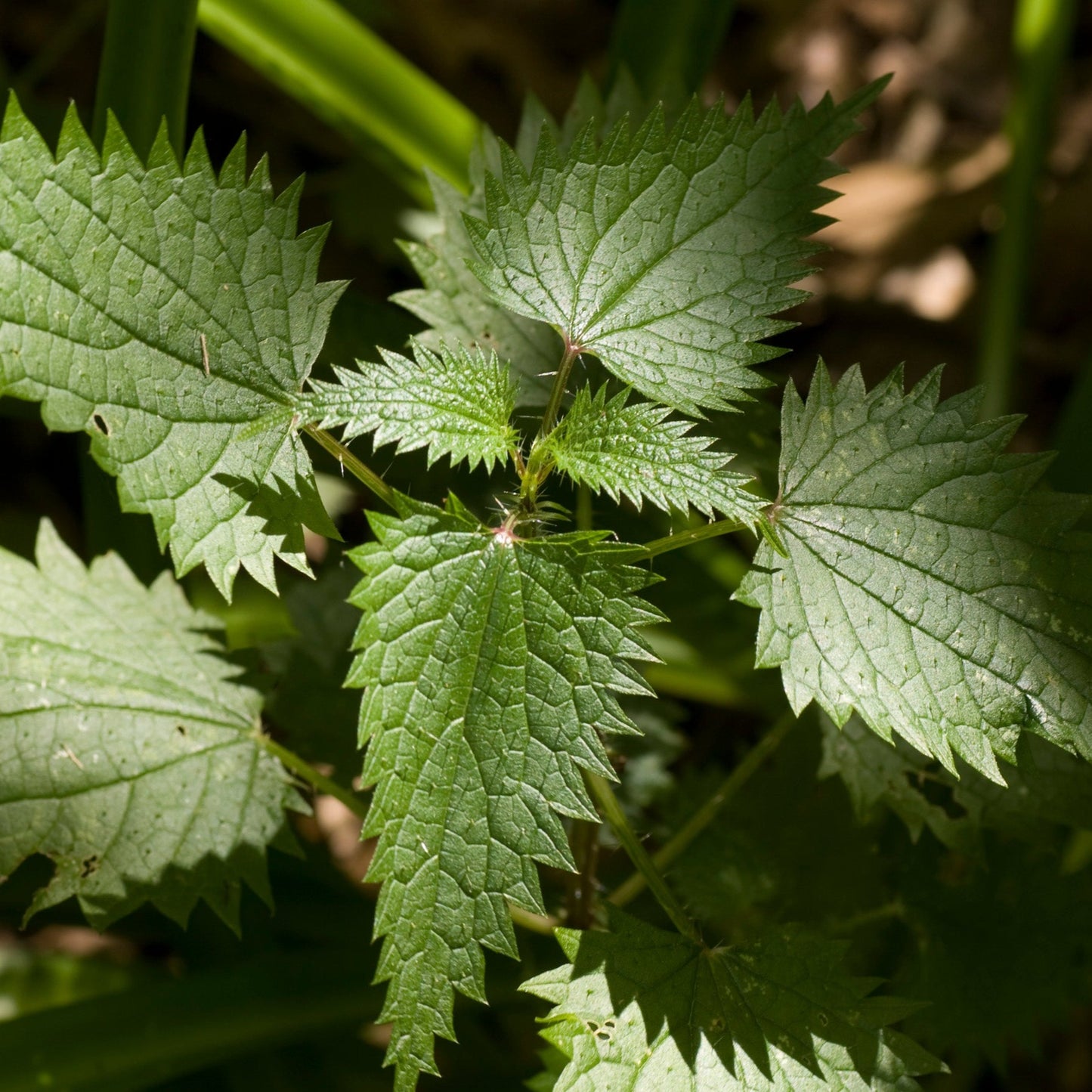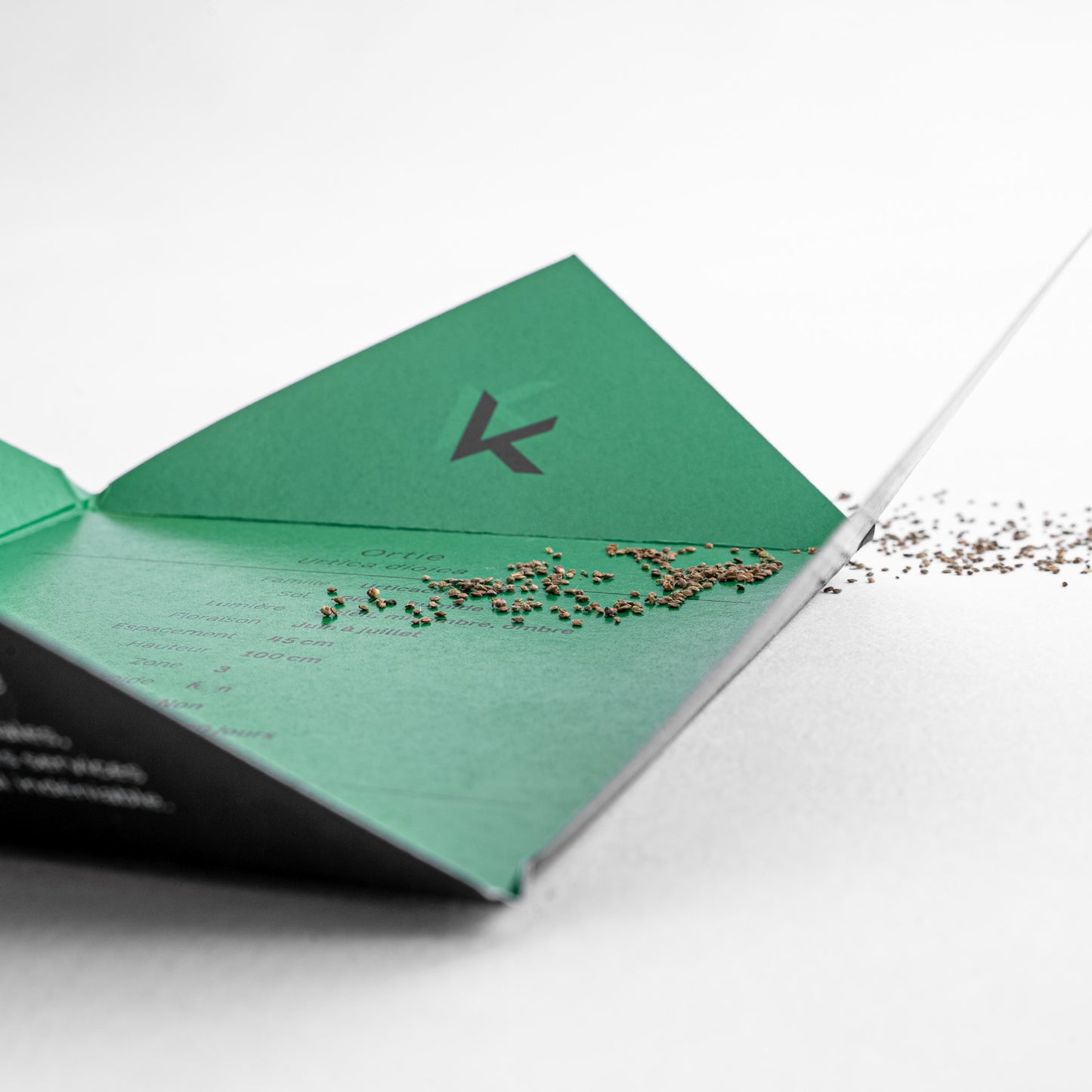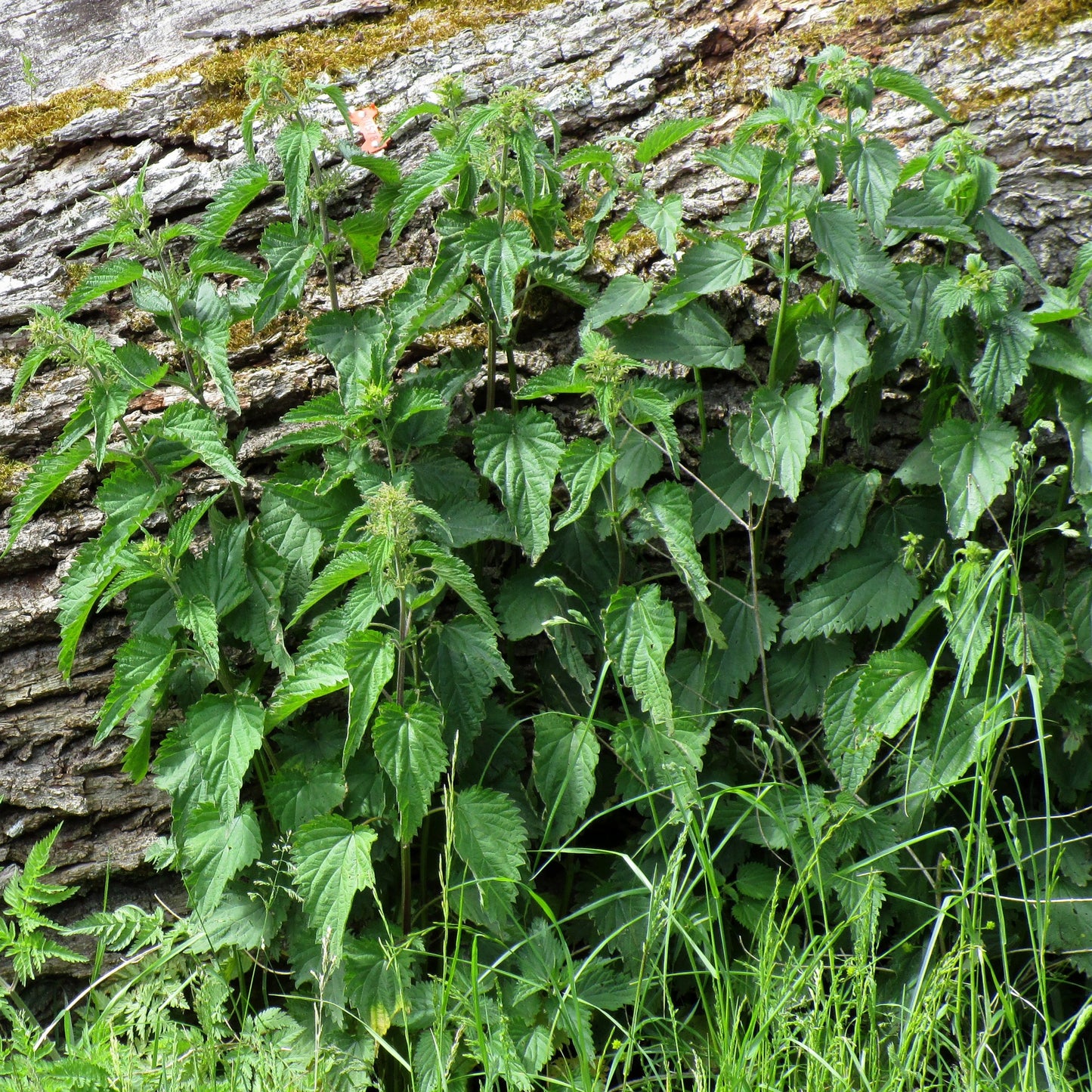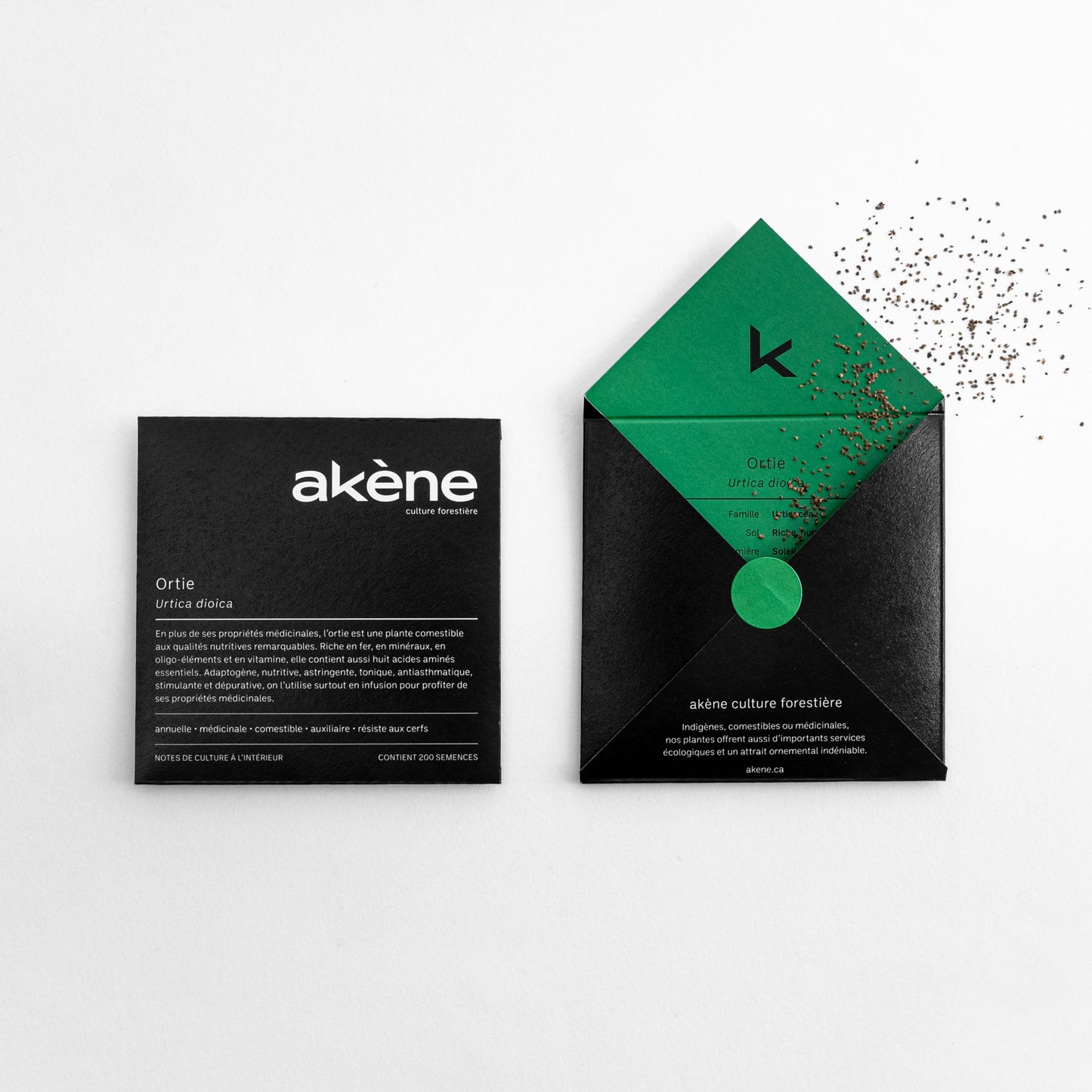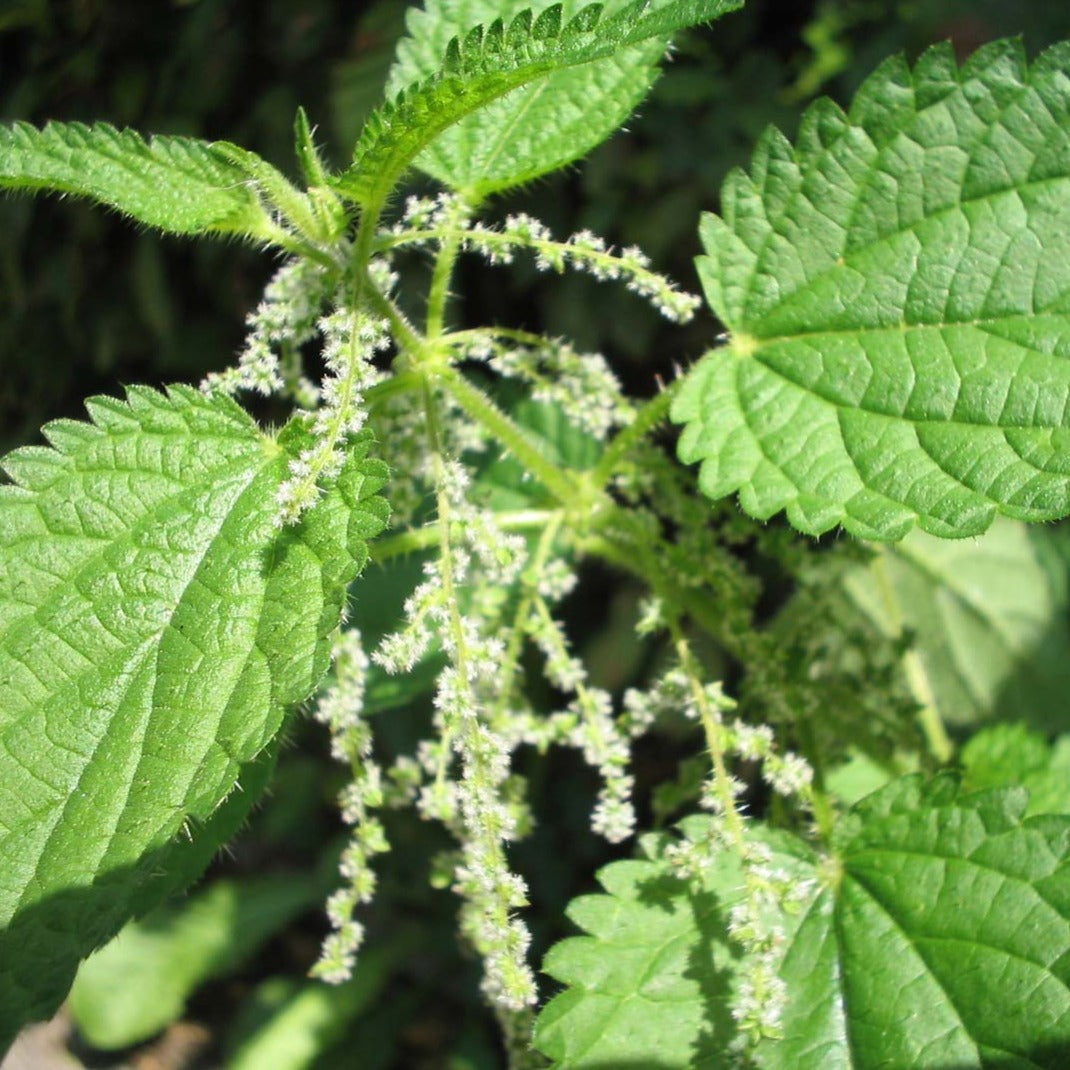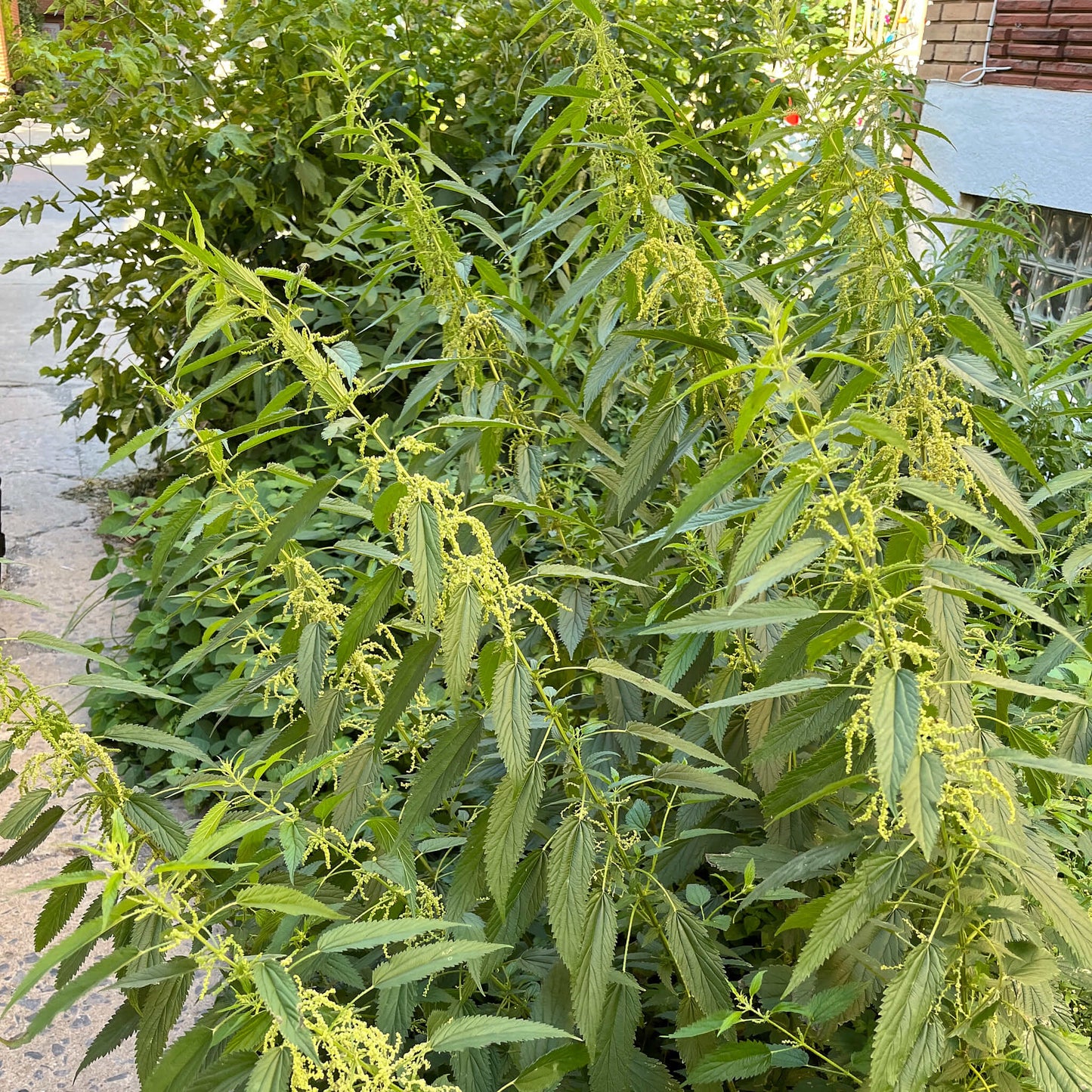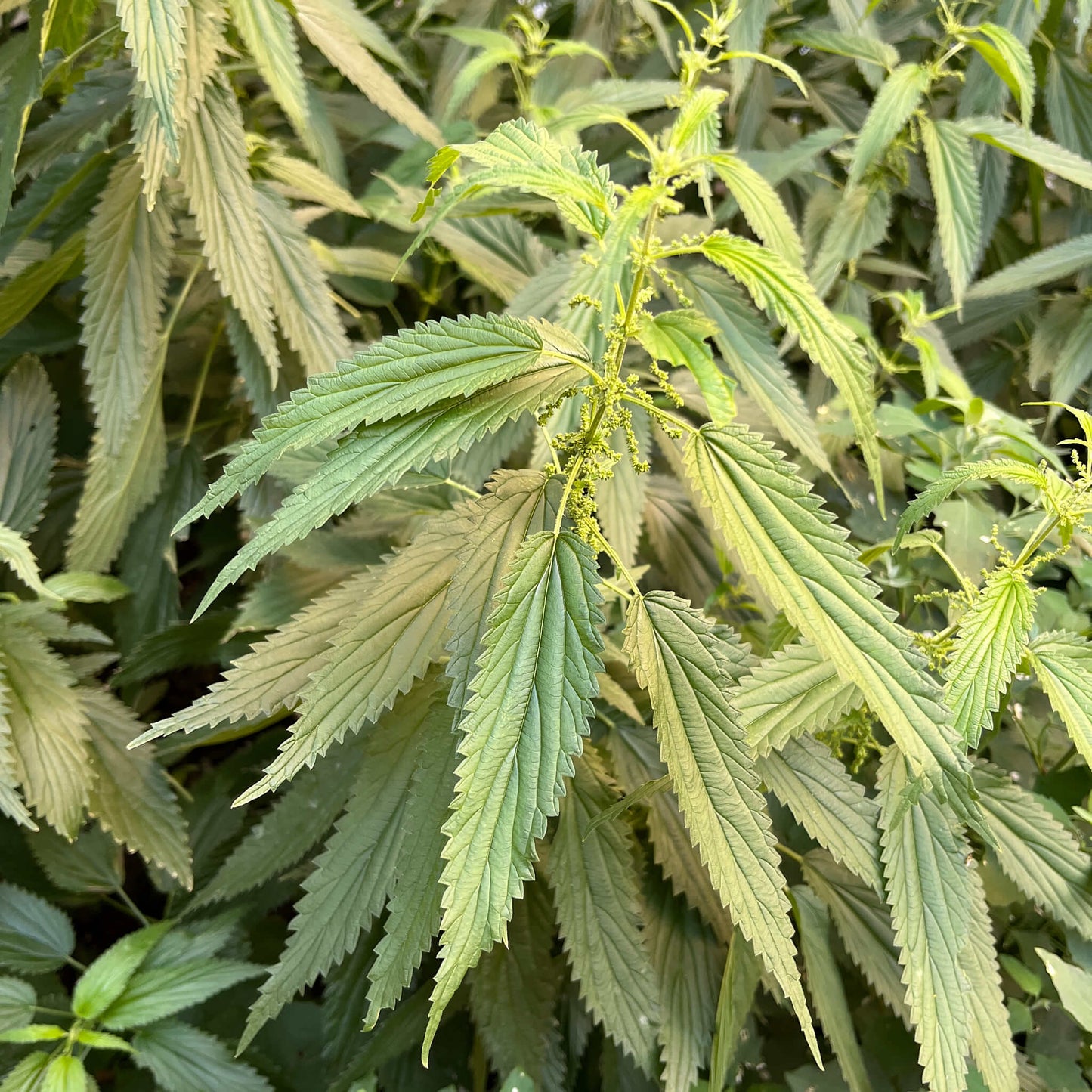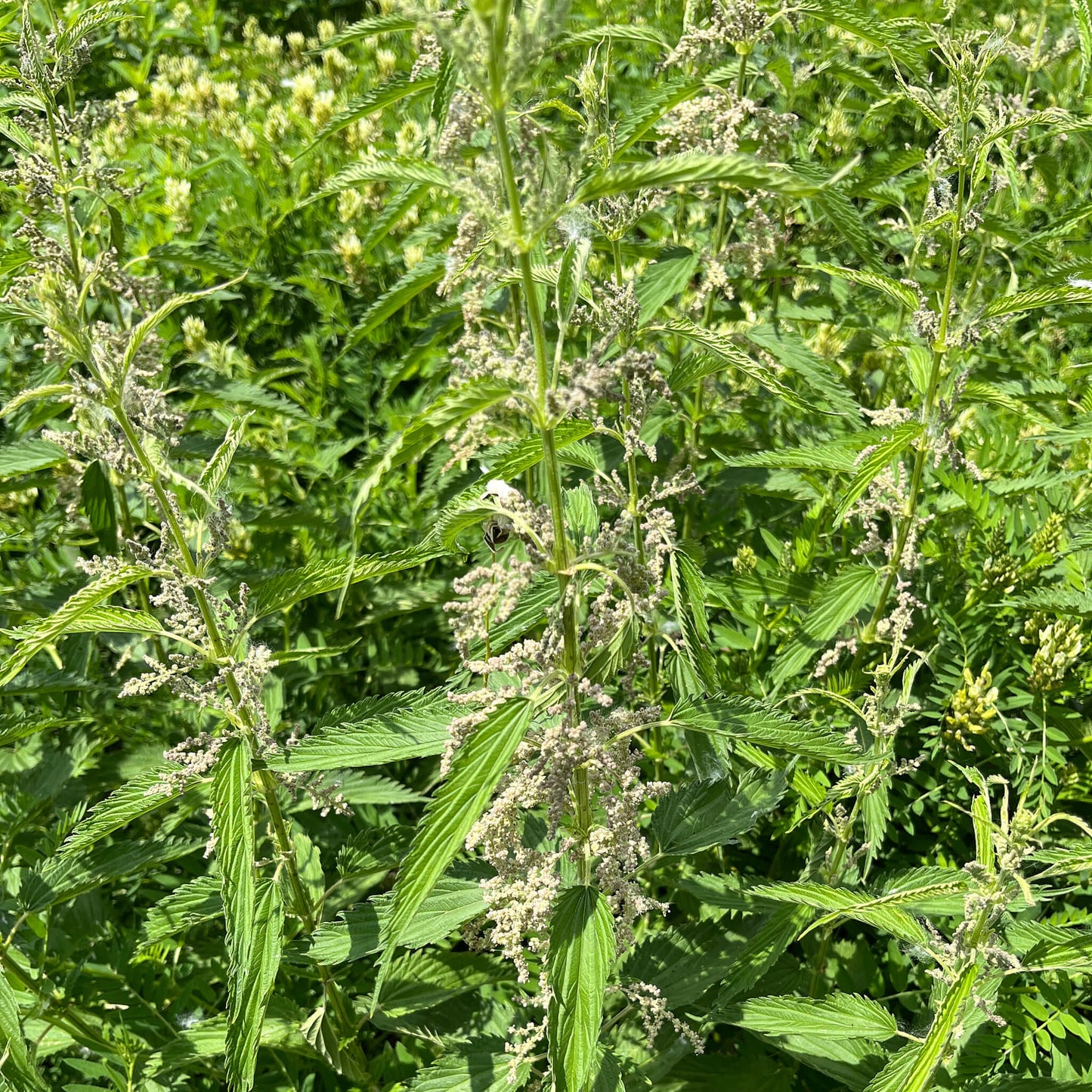For successful seedlings,
see the growing notes at the bottom of the page!
Stinging nettle (Urtica dioica) is a perennial plant often dreaded for its stinging hairs that can cause itching if accidentally touched. However, this plant is a true nutritional and medicinal treasure. Rich in iron, minerals, trace elements, vitamins, and containing all eight essential amino acids, stinging nettle is one of the most nutrient-dense plants. It is also among the richest plant sources of protein, comprising 5-8% of its fresh weight (30-40% when dried). Known as an exceptional wild green, it is valued for its taste and versatility in cooking. For harvesting, it is best to wear gloves to avoid irritation.
Medicinal and Culinary Uses
Stinging nettle has numerous medicinal properties. It is adaptogenic, nutritious, astringent, tonic, anti-asthmatic, stimulating, and depurative. In infusions, it is widely used for its revitalizing effects and to help strengthen the immune system. The dried or fresh leaves support treating anemia due to their high iron content and are known to promote healthy hair, nails, and skin. In cooking, the young leaves, rich in protein and nutrients, can be cooked and added to soups, stir-fries, or pestos, offering a pleasant herbal flavour. Additionally, nettle plants can be macerated in water to create nettle compost tea, used as a nitrogen-rich fertilizer and natural insect repellent.
Ecological Roles
Stinging nettle plays an essential ecological role by supporting various insects, including butterflies that use its leaves as food for their caterpillars. In the garden, it also attracts beneficial insects and boosts biodiversity in areas where it grows. Thanks to its fertilizing compost tea, it can help enrich the soil and protect surrounding plants from certain diseases. Cultivating nettle in naturalistic gardens allows one to benefit from its ecological advantages and high nutritional value.
Akène cannot assume any responsibility for the use of plants for therapeutic purposes. Always seek advice from a professional before using a medicinal or edible plant.
Sowing and Growing
Technical Details
Seeds per packet: 200
Family: Urticaceae
Scientific name: Urtica dioica
Life cycle: Perennial
Hardiness zone: 3
Soil type: Loamy
Soil moisture level: Medium to slightly humid
Soil - additional attributes: Rich
Light: Sun, part shade, shade
Blooming: June to July
Spacing: 45 cm
Height: 100 cm
Deer resistance: High
Stratification: No
Scarification: No
Germination time: 15 to 20 days
Sowing depth: Surface


